10 Small Patio Ideas That Will Make A Big Impact
Turn your small patio into a private oasis that functions as a true room outdoors. These versatile ideas will bring you closer to nature and make the most of the space.


- 1. Add A Potted Tree
- 2. Build In Seating To Maximize Space
- 3. Use Rolling Raised Beds For Flexibility
- 4. Boost Privacy With Flowering Plants
- 5. Grow Overhead For An Immersive Effect
- 6. Go Big With Containers
- 7. Increase The Illusion Of Space With Mirrors
- 8. Add Drama With A Plant Theater
- 9. Grow A Vertical Edible Garden
- 10. Plant A Textural Feast With Ornamental Grass
Gardeners always want more space to relax and to grow, but a small patio is brimming with potential. Why not embrace the coziness and create an intimate outdoor room to enjoy the fragrance and textures of thoughtfully chosen plants?
Whether you want to grow easy-care patio plants that won't require much attention, cultivate vegetables in containers, or create a beautiful landscaping scheme around the patio, all this is possible with a small space.
If your goal is to make your patio feel larger, then clever design tricks can help to maximize the available space – from built-in seating to movable planters. Or, get closer to nature and design an immersive experience with a green wall or planted privacy screen.
Discover small patio ideas that can work for every budget and style of garden.
1. Add A Potted Tree
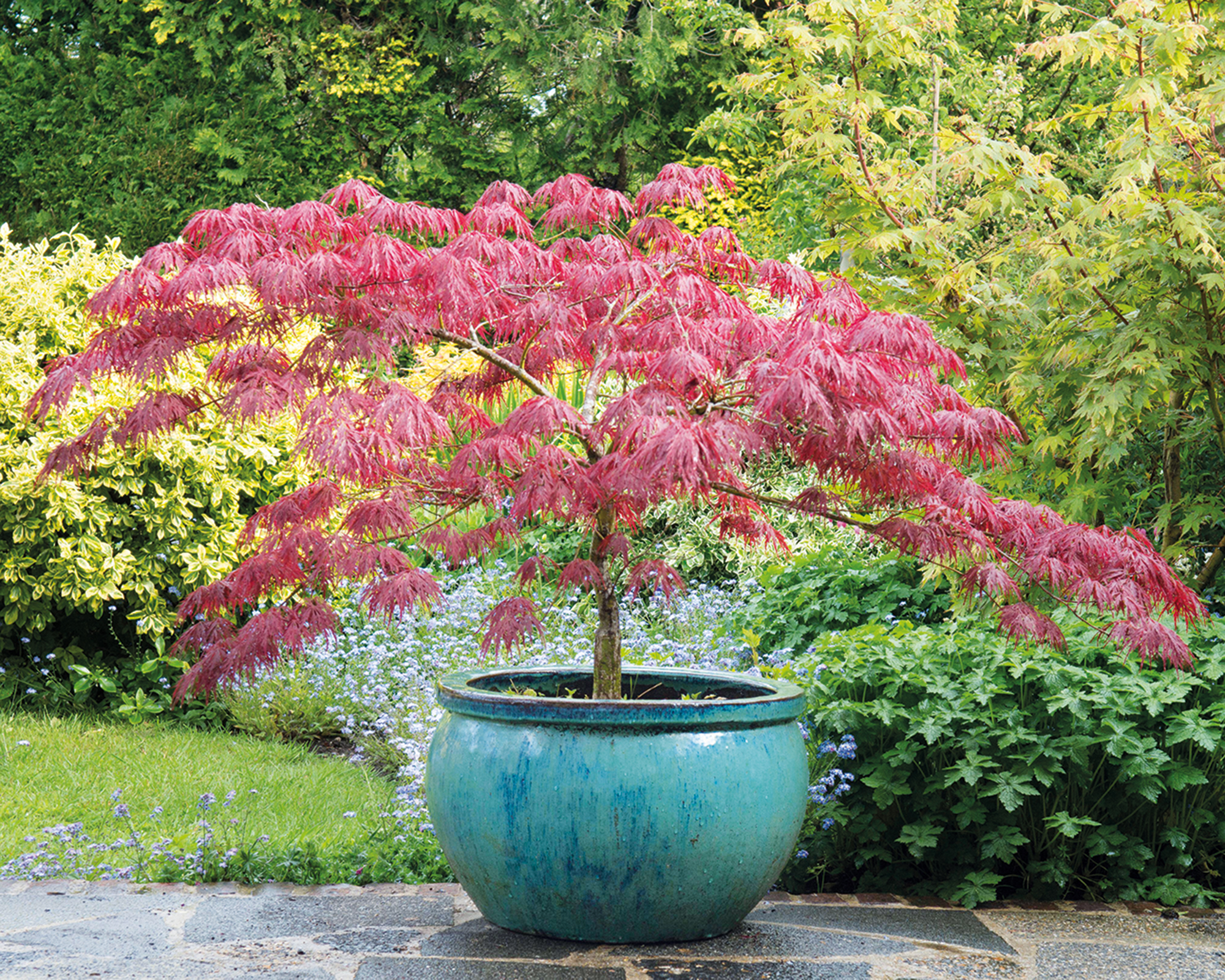
If you have a small yard, you may not think you have space for a tree, but many dwarf varieties are suitable for pots.
Growing trees in containers is a flexible solution that allows them to be enjoyed close to the house. It also enables you to create additional shade next to a seating area, and add vertical interest away from a wall.
Consider potting up dwarf conifer trees, flanking a doorway with ball-shaped boxwoods, growing a container orchard on the patio, or making a stunning feature with a dwarf Japanese maple, which is one of the best trees for fall color.
Sign up for the Gardening Know How newsletter today and receive a free copy of our e-book "How to Grow Delicious Tomatoes".
Container trees will need the same consideration of light levels and soil type as if grown in the ground. Always check the mature size of the tree and choose a generous container, as potted trees have higher watering demands than those planted in the ground.
2. Build In Seating To Maximize Space

Make the most of your patio by building custom seating at the edge of the space. This timber design works perfectly with the on-trend slatted fence behind it and has an integrated raised bed to create an immersive oasis. It also allows easy access to the plants growing within.
If you are handy, a simple design like this is straightforward to build. Alternatively, hire a local carpenter to create one for you.
Add outdoor seat cushions and a fire pit to cozy up when the mercury drops.
3. Use Rolling Raised Beds For Flexibility

There are so many unique raised bed ideas that can be incorporated into a small patio design. But for the ultimate in flexibility, you can't beat a rolling raised bed on wheels.
Need to move your plants out of the high summer heat or to a more sheltered spot over winter? Want to make more space on the patio when you're entertaining? All of this is possible with a rolling raised bed.
Traditional raised beds are built out of wood in a permanent position. This style of gardening brings so many benefits to growing both vegetables and ornamental plants, as it allows for the soil to be tailored to the plants within.
Set higher up off the ground, raised beds are also easier to access for weeding, pruning, and harvesting, and are also quicker to warm up in the spring than the ground.
Vego's range of rolling planters, available in the Gardening Know How Shop, are self-watering, offering the ultimate flexible, low-maintenance solution for small patios.
4. Boost Privacy With Flowering Plants

Make your patio feel like a secret oasis by including flowering plants for privacy. While structures can be used to provide cover, plants offer a much softer, natural way to separate areas. In particular, flowering varieties will surround your patio with color and fragrance.
Most flowering privacy shrubs are deciduous, meaning they die back in the colder months. So if you require winter coverage you will need to opt for evergreen shrubs for privacy. Beautiful evergreen options include camellia, cherry laurel, and California lilac.
If your priority is to create privacy quickly, then there are some fast-growing shrubs for privacy that also flower, such as bougainvillea, hibiscus, and rosemary.
5. Grow Overhead For An Immersive Effect
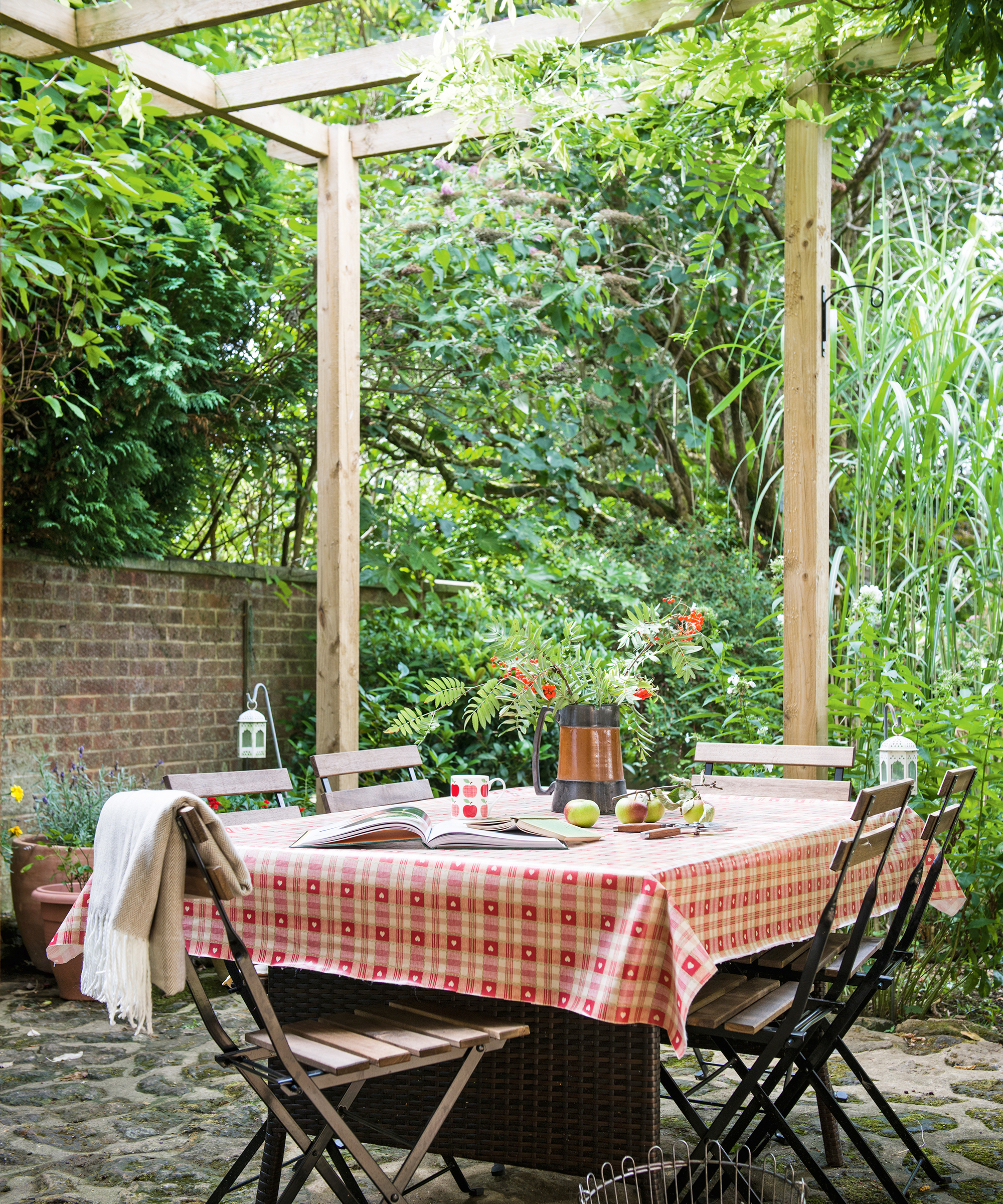
Add a pergola or archway to your patio to allow vining and climbing plants to grow up and overhead. Not only does this create an immersive experience, it also adds shade and privacy to a small space.
Ideal pergola plants include climbing roses, grapevines, clematis, honeysuckle, jasmine, and wisteria. However, you can even use them to grow vining vegetables such as beans, squash, and tomatoes.
Bear in mind twining and tendril vines will naturally grow up a pergola or archway without any further support, while other climbing plants will need to be tied in as they grow.
6. Go Big With Containers

Container gardening is an essential element for any patio. It can be tempting to squeeze as many containers into a patio as possible – small pots are cheaper, easy to move, and won't take up too much space. However, a sea of containers not only creates a cluttered look to the design but adds extra work in watering, as little pots dry out much more quickly.
A small number of large statement containers will look better and give more flexibility to what you can plant. They will also require far less watering.
Crescent Garden's Orinoco double-walled bowl planter, available in the Gardening Know How Shop, comes in three sizes, and can be stacked to make a tiered planter. The lightweight design is chip-resistant, weather-proof, and highly durable, so it won't crack or fade during extreme temperatures. The double-walled design provides insulation to protect the plants within.
7. Increase The Illusion Of Space With Mirrors
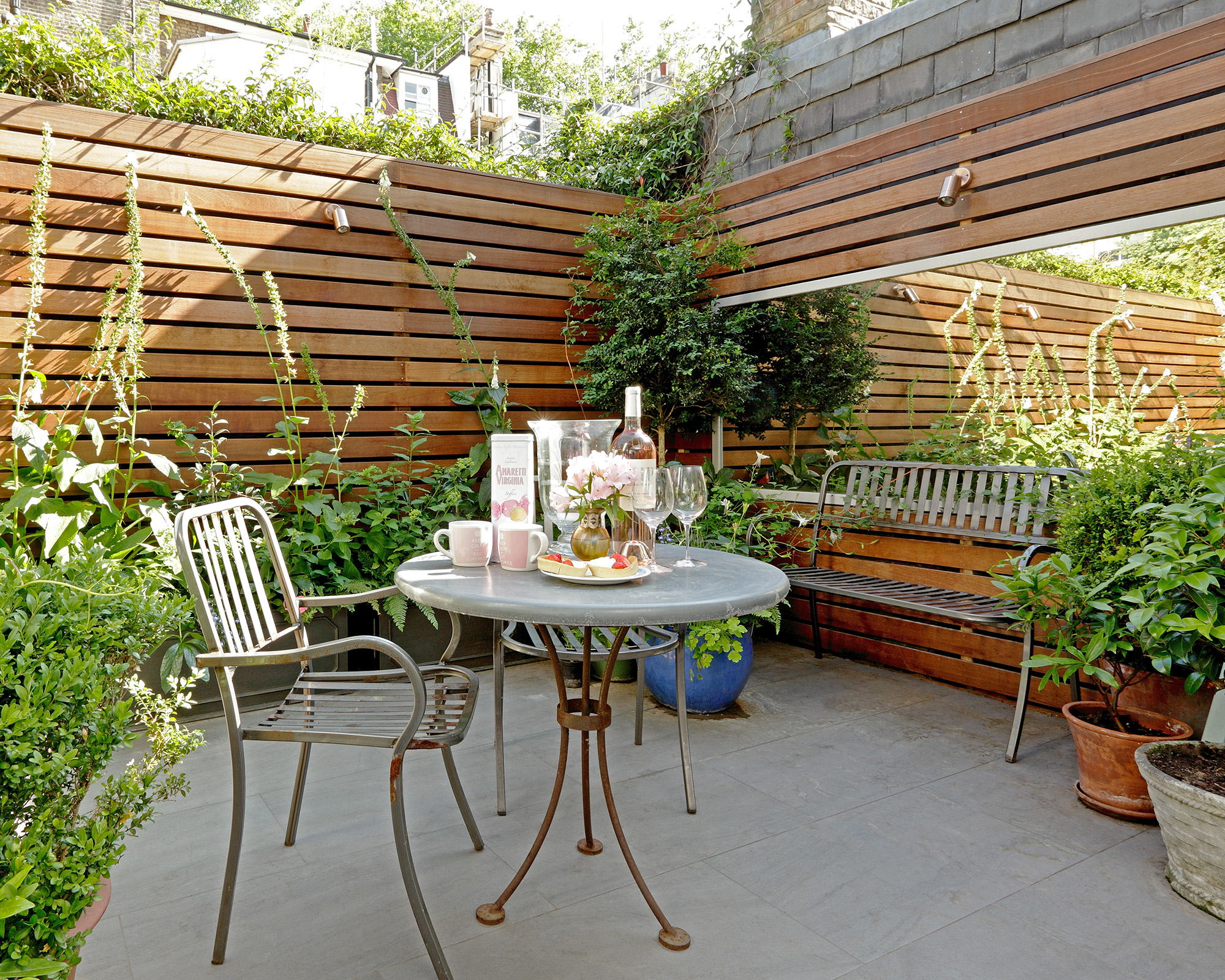
Using mirrors in the garden is a clever way to make the space feel larger and lighter. They can also be used to trick the eye into thinking the planting extends beyond the space, making you feel surrounded by flowers and foliage.
It's a particularly effective technique when climbing plants are positioned to grow around the frame, giving the impression of a doorway or window to a secret garden.
A mirror can be mounted to the rear wall of a house or a boundary wall or fence – but ensure it has a water-resistant backing.
Consider the angle of the mirror so that it reflects light where it is wanted, and does not add glare to shade plants, for example. Give thought to how it can be used to maximize the reflection of attractive features and plants, rather than to garden visitors or trash cans.
8. Add Drama With A Plant Theater

Plant theaters – or auricula theaters – became popular in Europe in the 16th century, and were originally intended to protect primula auricula, delicate patterned flowers that are difficult to care for.
Over the centuries, they evolved into a more decorative form of displaying small plants, and are now widely used for geraniums.
Plant theaters look stunning on a small patio, with terracotta pots lined up on their shelves. The stand itself can be clean-lined and modern, or brimming with rustic charm.
When installing plant shelves, take the weight of the potted plants into consideration. An ornamental plant stand in a corner of the patio is a lovely alternative.
9. Grow A Vertical Edible Garden
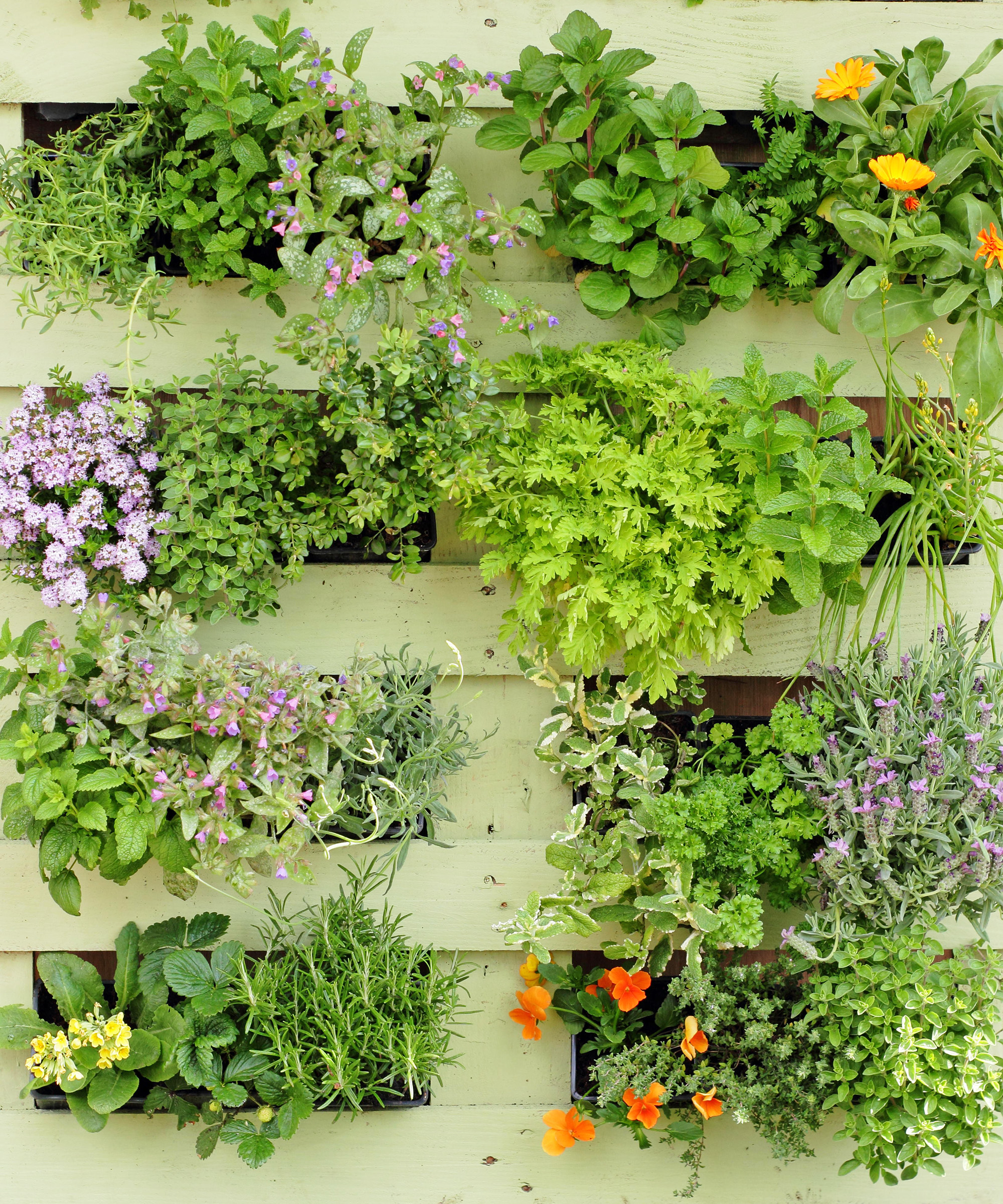
Embrace the vertical growing plane by adding a wall planter filled with herbs and salad crops.
A patio herb wall is a lovely way to add fragrance and flavor close to the house – and also serves as a draw for precious pollinators such as butterflies. Alternatively, grow leafy salads that will be out of reach for many pests.
Pocket wall kits can be purchased for easy installation, or smake your own wall planter by upcycling a wooden palette.
10. Plant A Textural Feast With Ornamental Grass
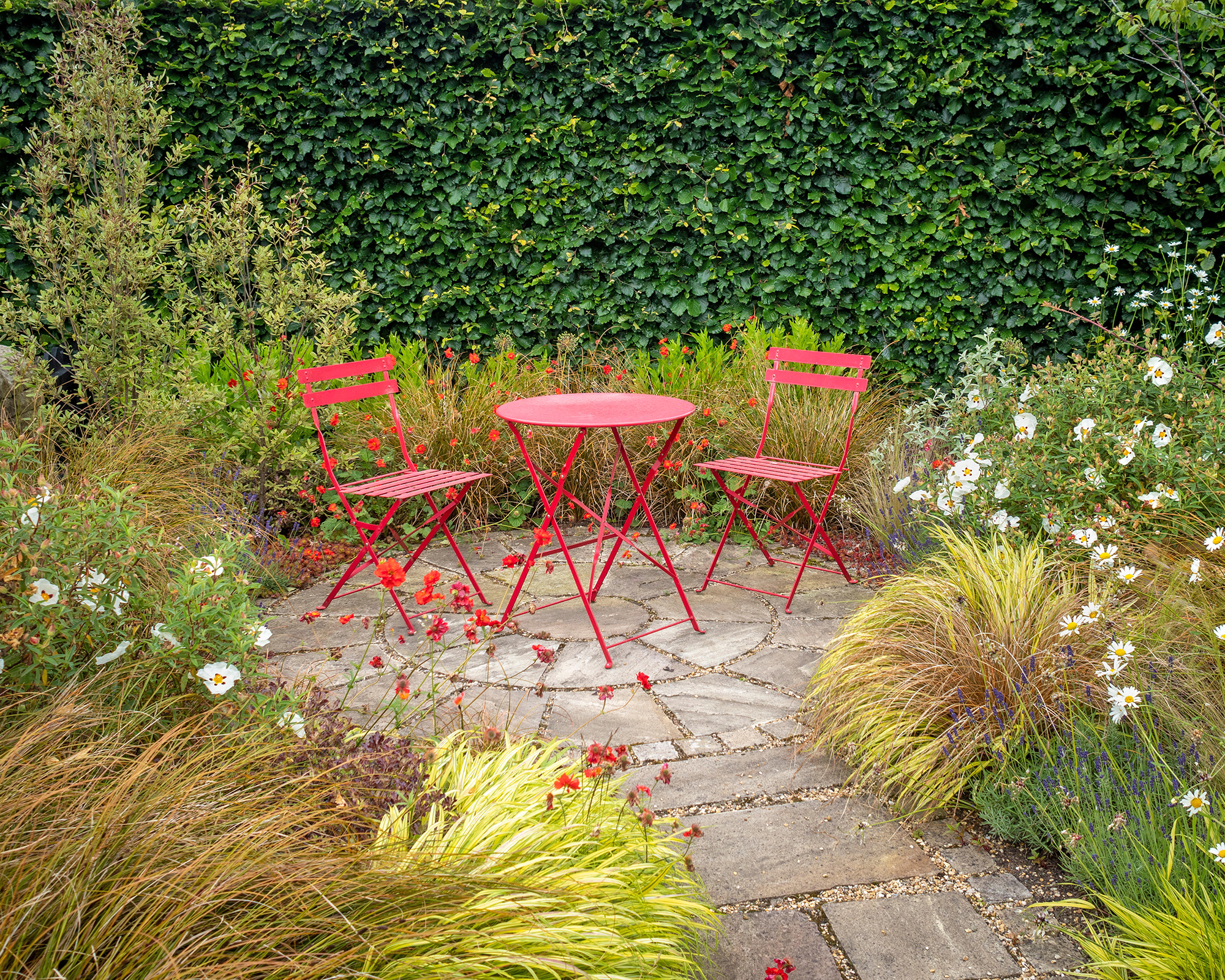
Ornamental grass adds a rich tapestry of color and texture to a garden. There are many different varieties in an array of colors and heights.
When used around a patio, ornamental grass softens the hardness of paving materials and makes a dramatic contrast with more compact plants.
Use cool-season grasses to fill the gaps that other plants leave behind in the fall and to add interest in winter, or warm-season grasses in the wake of spring bulbs and early flowering perennials.
Dwarf varieties make excellent edging plants for patios, while taller varieties add height and structure and can even make a statement in containers.
This article features products available from third-party vendors on the Gardening Know How Shop.

Melanie is an experienced gardener and has worked in homes and gardens media for over 20 years. She previously served as Editor on Period Living magazine, and worked for Homes & Gardens, Gardening Etc, Real Homes, and Homebuilding & Renovating. Melanie has spent the last few years transforming her own garden, which is constantly evolving as a work in progress. She is also a passionate organic home grower, having experimented with almost every type of vegetable at some point. In her home, Melanie tends to an extensive houseplant collection and is particularly fond of orchids.